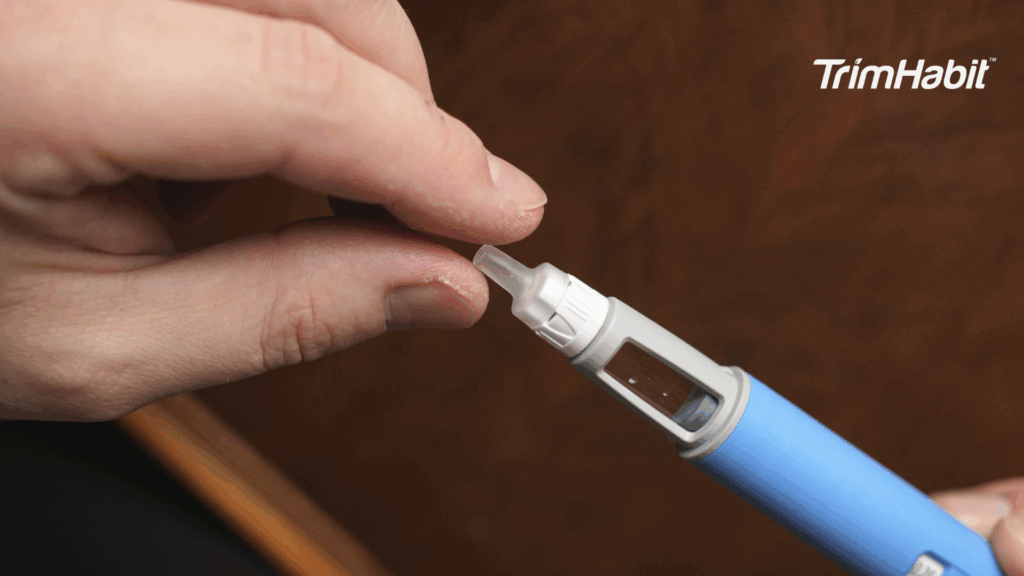Intermittent fasting has become increasingly popular due to its numerous health benefits, such as weight loss, improved metabolic function, and enhanced overall well-being.
One of the lesser-known benefits of intermittent fasting is its positive impact on joint health.
Incorporating a structured intermittent fasting routine into your daily habits can enhance your overall well-being and manage joint pain more effectively.
Let’s explore daily intermittent fasting routines for improving joint health.
Types Of Intermittent Fasting
There are several types of intermittent fasting routines that you can incorporate into your daily life to improve joint health:
Time-Restricted Eating (TRE)
Time-restricted eating involves consuming meals within a specific daily time window, typically 6 to 12 hours.
For instance, you might eat between 10 am and 6 pm and then fast for the remaining 16 hours.
This method can help regulate blood sugar levels and reduce inflammation, crucial for maintaining joint health1.
Alternate Day Fasting (ADF)
Alternate-day fasting involves alternating between regular eating and fasting days or consuming very few calories (about 500-600 calories).
This method can be effective for weight loss and reducing inflammation, benefiting joint health2,3.
The 5:2 Diet
The 5:2 diet involves eating normally five days a week and reducing your calorie intake to about 500-600 calories on the remaining two days.
This intermittent fasting regimen can help improve body composition, reduce inflammation, and promote joint health4.
The Science Behind Intermittent Fasting And Joint Health
Intermittent fasting can help improve joint health by reducing inflammation. Chronic inflammation significantly contributes to joint pain and diseases such as rheumatoid arthritis.
Studies have shown intermittent fasting can lower inflammatory markers in the blood, reducing inflammation and joint pain5,6.
Moreover, intermittent fasting can help lose weight and maintain a healthy weight. Excess body weight places additional stress on joints, exacerbating pain and inflammation.
Intermittent fasting can help you lose weight. This can ease the strain on your joints, improve joint health, and reduce pain7.
Intermittent Fasting Benefits For Joint Health
Rheumatoid arthritis (RA) is a chronic inflammatory disease that affects the joints, causing pain and stiffness. Intermittent fasting can be particularly beneficial for individuals with RA, as it helps reduce inflammation and manage symptoms.
Reduced disease activity.
Research has shown that intermittent fasting can help reduce disease activity in individuals with rheumatoid arthritis.
An intermittent fasting diet can lower levels of pro-inflammatory cytokines, which play a significant role in the inflammation associated with RA.
This reduction in inflammation can lead to decreased disease activity and improved symptoms8.
Improved insulin sensitivity.
Intermittent fasting has been shown to improve insulin sensitivity, offering potential benefits for individuals with rheumatoid arthritis.
Improved insulin sensitivity helps regulate blood sugar levels and reduce inflammation, contributing to better joint health9.
Weight management.
Maintaining a healthy weight is crucial for managing rheumatoid arthritis symptoms. Excess weight can increase the burden on joints, worsening pain and inflammation.
Intermittent fasting promotes weight loss and helps individuals maintain a healthy weight, alleviating joint stress and improving symptoms10.
Implementing Intermittent Fasting For Healthy Joint
To ensure the effectiveness of intermittent fasting for joint health, select the right fasting method, begin your routine, and incorporate nutrient-dense foods.
Establish a routine.
Establishing a routine that fits your schedule is essential for successfully incorporating intermittent fasting into your lifestyle.
Choose a fasting method that suits your daily activities and stick to it consistently.
Consistency is critical to reaping the benefits of intermittent fasting for joint health.
Focus on a healthy diet.
While intermittent fasting can help reduce overall food intake, focusing on a healthy diet during your eating periods is crucial.
A diet rich in anti-inflammatory foods, such as whole grains, lean protein, healthy fats, and plenty of fruits and vegetables, like a Mediterranean-style diet.
During feasting, eat nutrient-dense food to compensate for the loss during the calorie restriction period.
Stay hydrated.
Drinking plenty of water and no-calorie beverages during your fasting periods is essential. Staying hydrated promotes optimal health outcomes, so drink liquids regularly11.
Combine fasting with physical activity.
Regular physical activity can enhance the benefits of intermittent fasting for joint health.
Exercise helps maintain a healthy weight, strengthen muscles around the joints, and improve overall joint function.
Incorporate low-impact exercises such as swimming, cycling, or yoga into your routine to support joint health12.
Monitor your body’s response.
Pay attention to how your body responds to intermittent fasting.
If you experience increased joint pain or other adverse effects, consider adjusting your fasting regimen or consult a healthcare professional.
Everyone’s body is different, and finding a fasting routine that works best for you is essential.
Sample Daily Intermittent Fasting Routines For Improving Joint Health
To give you an idea, here are some guidelines you can follow. These can be tailored to your needs and don’t have to be strictly followed.
Morning (7 am – 12 pm)
- 7 AM: Drink water or a no-calorie beverage such as herbal tea.
- 8 AM: Engage in light physical activity, such as morning walks or yoga sessions.
- 10 AM: Begin your eating window with a healthy breakfast rich in protein and healthy fats, such as an omelet with vegetables and avocado and a serving of whole grains like oatmeal.
Midday (12 pm – 3 pm)
- 12 PM: Have a balanced lunch with lean protein, such as grilled chicken or fish, plenty of vegetables, and healthy fats like olive oil or nuts.
- 2 PM: Drink water or herbal tea to stay hydrated.
Afternoon (3 pm – 6 pm)
- 4 PM: Enjoy a healthy snack, such as a handful of nuts, fruit, or yogurt with chia seeds.
- 6 PM: Eat a nutritious dinner with lean protein, whole grains, and colorful vegetables. Aim for a Mediterranean-style meal with olive oil, fish, and whole grains.
Evening (6 pm – 7 am)
- 7 PM: End your eating window and begin your fasting period. Continue to drink water or no-calorie beverages throughout the evening.
- 9 PM: Engage in light stretching or a relaxing activity to wind down for the night.
- 10 PM: Ensure you get a good night’s sleep to support overall health and joint recovery.
Tips To Know For Starting An Intermittent Fast
1. Start slowly.
If you’re new to intermittent fasting, gradually increase your fasting periods.
Begin with a 12-hour fasting window and progressively extend it as your body adjusts.
2. Eat nutrient-dense foods.
During your eating periods, focus on consuming nutrient-dense foods that support joint health.
Incorporate plenty of fruits, vegetables, lean proteins, healthy fats, and whole grains into your diet.
3. Avoid processed foods.
Processed foods can exacerbate inflammation and joint pain. Avoid foods high in sugar, refined carbohydrates, and unhealthy fats.
Instead, opt for whole, unprocessed foods that provide essential nutrients and promote overall health.
4. Stay consistent.
Consistency is critical to achieving the benefits of intermittent fasting. Stick to your chosen fasting regimen and make it a part of your daily routine.
Over time, your body will adapt and experience improved joint health.
5. Listen to your body.
Pay attention to how your body responds to intermittent fasting. Adjust your fasting routine if you experience adverse effects or increased joint pain.
Finding a fasting regimen that works best for you and supports your overall health.
Conclusion
Incorporating intermittent fasting routines for improving joint health can significantly benefit individuals suffering from joint pain and inflammation.
Adopting a structured intermittent fasting regimen, focusing on a healthy diet, staying hydrated, and engaging in regular physical activity can enhance your overall well-being and manage joint health more effectively.
Consider consulting a healthcare professional before starting any new dietary regimen, especially if you have existing health conditions.
Intermittent fasting offers a promising approach to improving joint health and overall quality of life. With consistency and dedication, you can experience the many benefits of this dietary approach and enjoy a healthier, more active lifestyle.
By choosing appropriate hour windows, entering a fat-burning mode, and incorporating healthy foods into your healthy eating plan, you can maximize the positive impacts on your joint health.









